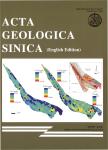The Surface Rupture Zone and Coseismic Deformation Produced by the Yutian Ms7.3 Earthquake of 21 March 2008,Xinjiang
The Surface Rupture Zone and Coseismic Deformation Produced by the Yutian Ms7.3 Earthquake of 21 March 2008,Xinjiang作者机构:State Key Laboratory of Earthquake DynamicsInstitute of GeologyChina Earthquake Administration Beijing 100029China Institute of Remote Sensing ApplicationChinese Academy of SciencesBeijing 100101China
出 版 物:《Acta Geologica Sinica(English Edition)》 (地质学报(英文版))
年 卷 期:2012年第86卷第1期
页 面:256-265页
核心收录:
学科分类:070801[理学-固体地球物理学] 0709[理学-地质学] 0819[工学-矿业工程] 07[理学] 0708[理学-地球物理学] 0818[工学-地质资源与地质工程] 0816[工学-测绘科学与技术]
基 金:supported by the National Natural Science Foundation of China(40940020,40874006) National Key Laboratory of Earthquake Dynamics(LED2010A02,LED2008A06)
主 题:Yuntian Earthquake high resolution image D-InSAR surface rupture zone coseismic deformation field
摘 要:On 21 March 2008, a Ms7.3 earthquake occurred at Quickbird, Yutian County, Xinjiang. We attempt to reveal the features of the causative fault of this shock and its coseismic deformation field. Our work is based on analysis and interpretation to high-resolution satellite images as well as differential interferometric synthetic aperture radar (D-InSAR) data from the satellite Envisat SAR, coupled with seismicity, focal mechanism solutions and active tectonics in this region. The result shows that the 40 km-long, nearly NS trending surface rupture zone by this event lies on a range-front alluvial platform in Qira County. It is characterized by distinct linear traces and simple structure with 1-3-m-wide individual seams and maximum 6.5 m width of a collapse fracture. Along the rupture zone many secondary fractures and fault-bounded blocks are seen, exhibiting remarkable extension. The eoseismic deformation affected a large area 100~100 km2. D-InSAR analysis indicates that the interferometric deformation field is dominated by extensional faulting with a small strike-slip component. Along the causative fault, the western wall fell down and the eastern wall, that is the active unit, rose up, both with westerly vergence. Because of the big deformation gradients near the seismogenic fault, no interference fringes are seen on images, and what can be determined is a vertical displacement 70 cm or more between the two fault walls. According to the epicenter and differential occurrence times from the National Earthquake Information Center, China Earthquake Network Center, Harvard and USGS, it is suggested that the seismic fault ruptured from north to south.



